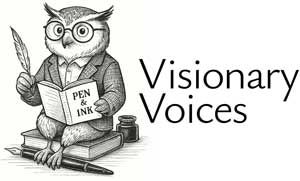The Fundraising Landscape Has Changed—Has Your Strategy?
In today’s unpredictable economic climate, nonprofits are finding it harder than ever to maintain stable funding. Organizations that lean too heavily on a single revenue source—such as annual events, government grants, or major donors—leave themselves vulnerable when circumstances change.
We’ve seen it firsthand. During the COVID-19 pandemic, many nonprofits that relied on in-person fundraising events saw their revenue streams dry up overnight. Those dependent on government grants faced abrupt freezes. And organizations with a small donor base watched in horror as economic downturns made their biggest supporters tighten their belts.
So, what’s the solution? A diversified, balanced approach to fundraising.
The Danger of Putting All Your Eggs in One Basket
Fundraising should be like a well-balanced investment portfolio. If your entire strategy relies on one or two sources, a single disruption can throw your organization into crisis mode. Imagine balancing on a one-legged stool—it might hold for a while, but the moment something shakes it, down you go.
Yet, we see nonprofits do this all the time:
-
- Over-relying on events – An annual gala is great, but what happens if attendance drops or a pandemic forces cancellation?
-
- Chasing only major gifts – Big donors can make a huge impact, but what if their priorities shift or their investments take a hit?
-
- Counting on grants – Government and foundation grants can be a lifesaver, but what if a policy change redirects funds elsewhere?
When one piece of the puzzle falls apart, having multiple revenue streams keeps the mission moving forward. That’s why a balanced fundraising approach is so important.
The Political Factor: Expect the Unexpected
Every time a new administration takes office, changes to tax laws and charitable giving incentives are on the table. Some presidents champion tax cuts that benefit major donors, while others introduce policies that impact estate planning and deductions. The same applies to shifts in Congress—when new leadership takes control, fundraising landscapes can change overnight.
Take, for example, the SECURE Act, which was passed in 2019 and later expanded in 2022. It significantly changed how inherited IRAs work, eliminating the “stretch IRA” for most non-spousal beneficiaries. This directly affected legacy planning, making Qualified Charitable Distributions (QCDs) from IRAs an even more attractive option for donors looking to support nonprofits.
Now, with the new Trump administration and a Republican-led House and Senate, potential adjustments to tax policies, estate laws, or donor incentives could once again reshape how nonprofits receive support. While it’s impossible to predict specifics, history shows that staying informed and adaptable is key.
Nonprofits that rely on a balanced fundraising approach—incorporating annual giving, major gifts, and planned giving—are better positioned to weather these changes. Instead of scrambling when new laws take effect, they have multiple revenue streams in place, ensuring stability no matter what comes next from Washington.
The Key Ingredients of a Balanced Fundraising Strategy
We’ve been in this space long enough to know that diversification is not a luxury—it’s a necessity. Here are three core pillars to strengthening your nonprofit’s financial foundation:
1. Annual Giving: The Bread and Butter
Your base of loyal, recurring donors is what keeps the lights on. A strong direct mail and digital fundraising strategy ensures consistent contributions, no matter what else is happening in the world.
Make it easy for donors to give monthly. Small, recurring gifts add up over time!
Fundraising hack! Tweet
2. Major Gifts: The Game Changers
While planned giving secures the future, major gifts fund today’s critical needs. But here’s the secret: Major and planned gifts go hand in hand. A donor who makes a large gift today is often open to discussing a planned gift for tomorrow.
If you aren’t talking to your major donors about legacy giving, you’re leaving money on the table.
Fundraising gold! Tweet
3. Planned Giving: The Most Overlooked, Yet Most Reliable
Nonprofits that fail to integrate planned giving into their fundraising strategy are ignoring one of the most powerful tools for long-term stability. It’s an area where many organizations drop the ball—either because they assume it’s too complicated or because they focus on more immediate funding needs.
But here’s the reality: Even a basic planned giving program can create a financial cushion that lasts for decades.
We’ve seen organizations hit a rough patch, only to be saved by a surprise bequest from a longtime supporter. Wouldn’t you rather plan for these gifts rather than hope they happen by accident?
Every nonprofit should be promoting planned gifts on their website, in their newsletters, and in conversations with loyal donors.
Success Strategy! Tweet
A Real-World Example: The $683,000 Lifeline
I (Michael) recall once working with a nonprofit that relied heavily on event-based fundraising. One year, their big gala underperformed, leaving them scrambling to cover essential program costs.
Then, something unexpected happened.
A long-time donor, who had never made large contributions during her lifetime, left a bequest of $683,000 in her will. That single gift didn’t just cover the shortfall—it strengthened the organization’s endowment and funded a critical new initiative.
Stories like this aren’t unusual. They happen all the time. But the key is intentionality. Organizations that actively promote planned giving see more of these gifts.
Practical Steps to Build a Resilient Fundraising Strategy
Nonprofits that thrive through economic ups and downs don’t get lucky—they plan ahead, and they rely on a balanced fundraising approach. Here’s how to get started:
- Diversify Your Fundraising Efforts – Don’t rely too much on one revenue source. Add planned giving if you haven’t yet.
- Invest in Staff Training – Your team needs to be equipped to talk about different giving options.
- Modernize Your Giving Options – Donors want convenience. Make sure they can give via credit card, PayPal, stock, cryptocurrency, and donor-advised funds.
- Educate Donors About Planned Giving – The more you promote it, the more gifts you’ll receive. It’s that simple.
Final Thoughts: Don’t Wait Until It’s Too Late
A balanced fundraising strategy isn’t about hedging bets—it’s about securing your organization’s future. Nonprofits that adapt to changing conditions, diversify their revenue, and embrace planned giving are the ones that last.
So, the question is: Will your organization be one of them?
What’s Next?
If you’re ready to take your fundraising strategy to the next level, let’s talk. Whether you need help launching a planned giving program or refining your major gifts strategy, we’re here to help.








